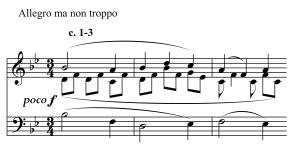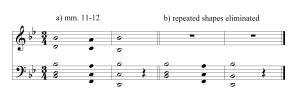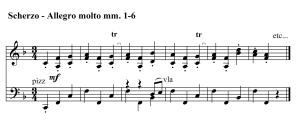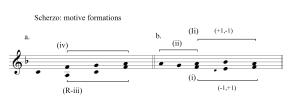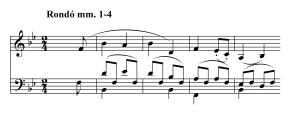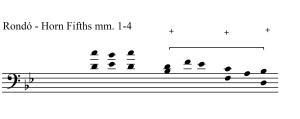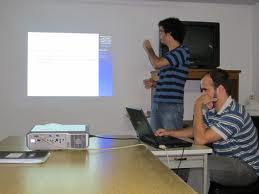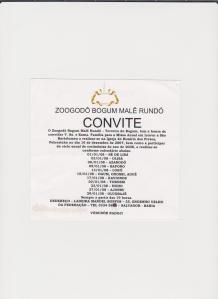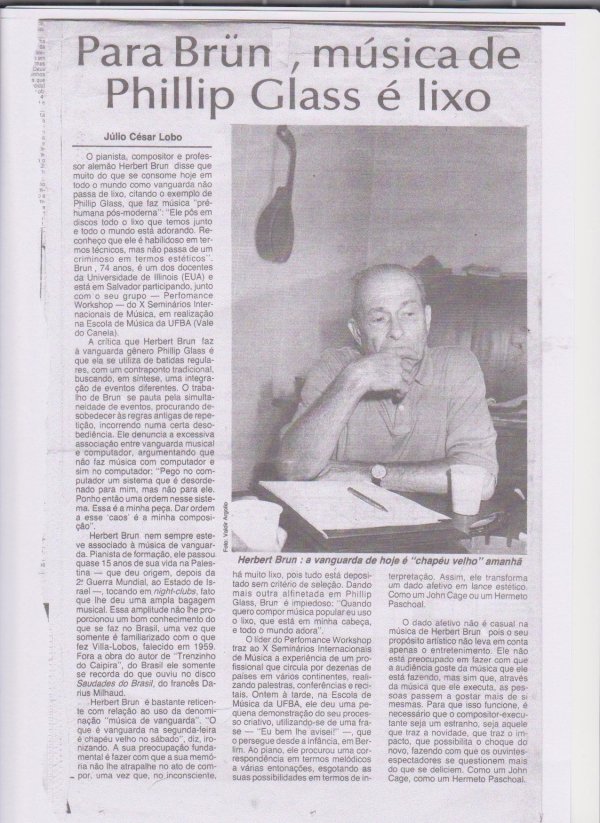HIRSCHFELD, Magnus and BURCHARD, E. [1913] “Ein Fall von Transvestitismus bei musikalishem Genie”. Neurol. Zbl. 32, p. 949-950
REPOND, André [1913]. “Über Störungen der musikalischen Reproduktion bei der Schizophrenie”. Allg. Zschr. Psychiatr. 70, p. 261-282.
TELLER, Frieda. [1917-1919] “Musikgenuss und Phantasie”, Imago 5, p. 8-15.
EGGAR, K. [1920-21] “The Subconscious Mind and the Music Faculty”, Proceedings of the Musical Association XLVII, p. 23-38.
TESLAAR, James S. van. [1922]“Interest in Music: A Case Illustrating Some Infantile Roots of Musical Talent”. Psychoanal. Rev. 9, p. 429-435.
PFEIFER, Sigmund. [1923] “Musikpsychologische Probleme”, Imago 9, p. 453-462.
ELSTER, A. [1925]Musik und Erotik. Bonn (apud Langer [1989:208] n/ed.
CHIJS, A. van der [1926]. “Über das Unissono in der Komposition: Beitrag zur Psychoanalyse der Musik”. Imago 12, p. 23-31.
STORFER, Adolph J. [1929] Beiträge zur psychoanalytischen Bibliographie . [ Musik ]. Psychoanal. Bewegung 1, p. 67-73.
BACH, Hans. [1933-34]. “Musik als Heilmittel”. Ciba Zschr. (Basel) 1, n. 4, p. 110-112.
HITSCHMANN, Eduar. [1933] “Kain – und Ödipus-Komplex in musikalischer Produktion”. Psychoanal. Bewegung 5, p. 370-372
JOBERT, Leon. [1934]. “Addenda to the Psychopathology of Everyday Life: The Cases of Two Students of Music”. Psychoanal. Rev. 21, p. 154-167
GUTHEIL, Emil. [1935] “Musical Day-Dreams”. Psychoanal. Rev. 22, p. 424-431.
YATES, Sybille. [1935] “Some Aspects of Time Difficulties and Their Relation in Music”. Intern. J. Psycho-Anal. 16, p. 341-354.
STERBA, Richard [1939]. “Die Problematik des musikalischen Geschehens”. Internat. Zsch. Psychoanal. und Imago 24, p. 428-423.
CORIAT, Isador H. [1945] “Some Aspects of a Psychoanalytic Interpretation of Music”. Psychoanal. Rev. 32, p. 408-418.
MONTANI, Angelo. [1945] “Psychoanalysis of Music”. Psychoanal. Quart. 32, p. 225-227.
BERGLER, Edmund and RóHEIM, Geza. [1946]. “Psychology of Time Perception”. Psychoanalytic Review, 15, p. 190-206
STERBA, Richard. [1946]. “Psychoanalysis and Music”. Amer, Imago 22, p. 96-111.
UNDERWOOD, E. Ashworth. [1947] “Apollo and Terpsichore: Music and the Healing Art. Bull. Hist. Med. 21, p. 639-673.
KOHUT, Heinz and LEVARIE, Siegmund. [1950] “On the Enjoyment of Listening to Music” Psychoanal. Quart. 19, p. 64-87.
MANN, Claire. [1950] Music and Exercise as a Form of Psychoterapy”. Psychoanal. Rev. 37, p. 143-155.
RACKER, Heinrich. [1951]. “Contributions to Psychoanalysis of Music”. Amer. Imago 8, p. 129-163.
SUTERMEISTER, Hans. [1951]. “Musiktherapie”. Universitas 6, p. 307-318.
KRIS, E. [1952] Psychoanalytic Explorations ind Art. New York, apud Spender [1980].
EHRENZWEIG, A. [1953]. Psycho-analysis of Artistic Vision and Hearing. Londres, apud Spender [1980] n/ed.
GLASER, Hugo. [1953]. “Die Medizinischen Heilwirkungen der Musik”. Universitas 8, p. 831-835.
REIK, T. [1953]. The Haunting Melody. New York, Farrar, Strauss & Young.
BRANFMAN, Theodore G. [1955]. “Psychology of Music and Musicians: Two CLinical Examples”. Amer. Imago 12, p. 3-7
KOHUT, Heinz. [1956]. “Some Psychological Effects of Music and their Relation to Music Therapy”. Music Therapy 1955, ed. E.T. Gaston. Lawrence, Kansas, p. 17.
ZANKLER, A. and GLATT, M. M. [1956] “Experiments with Music in a Mental Hospital”. Mschr.Psychiat. Neurol. 131, p. 215-225.
KOHUT, Heinz. [1957]. “Observations on the Psychological Functions of Music”. Journal of the American Psychoanalytic Association 1-4/5: 389-407.
NIEDERLAND, W. G. [1958]. Early auditory experiences, beating fantasies and primal scene. In: The Psychoanalytic Study of the Child, 18: 471-502. New York: International Universities Press.
BERENDES, Julius. [1960-63] “Magische Musik”. Ciba Zschr. (Wehr) 9, n. 100, p. 3331-3343.
HAISCH, Erich. [1961-1962]. “Musik in der Medizin”. Psyche 15, p. 486.
HERLINGER, Robert. [1961] “Melancholie und Musik”. Sudhoffs Arch. 45, p. 81-85.
POTEL, Maurice. [1963]. “Étude musicale et psychiatrique d’Hector Berlioz”. Cah. Lyonn. Hist. Med. 8, n. 1, p. 11-21.
RACKER, Heinrich. [ 1965]. “Psychoanalytic Considerations on Music and the Musician”. Psychoanal. Rev. 52, n. 3, p. 75-79.
STERBA, Richard. [1965]. “Psychoanalysis and Music”. American Imago, vol. 22, p. 96-111.
NOY, Pinchas. [1968]. “The Development of Musical Ability”. The Psychoanalytic Study of the Child, 23:332-347.
KÜMMEL, Werner. [1969].”Melancholie und die Macht der Musik. Die Krankheit König Sauls in der historischen Diskussion”. Med. Hist. J. 4, p. 189-209.
NASS, Martin. [1971]. “Some Considerations of a Psychoanalytic Interpretation of Music”. Psychoanalytic Quarterly, 40:303-316.
KLAUSMEIER, Ruth-Gisela. [1976]. “Musik-Erleben in der Pubertät”. Psyche 30, p. 1113-1136.
POLLOCK, George H. [1975] “Mourning and Memorialization Through Music”. Ann. Psychoanal. 3, p. 423-436.
ANZIEU, Didier. [1976]. “L’Enveloppe sonore du soi”. Nouvelle Revue de Psychoanalyse n. 13 – Narcisses. Paris, Gallimard.
KLAUSMEIER, Ruth-Gisela. [1973]. “Pubertät und Beatmusik”. Psyche 27, p. 643-657.
SEEMAN, Mary V. [1976]. “Time in Schizophrenia”. Psychiatry, 39, p. 189-195.
BORSTEIN, Melvin. [1977] “Analysis of a Congenially Blind Musician”. Psychoanal. Quart. 46, p. 23-27.
BROUSSELLE, André. [1979]. “Un Jeu de la Bobine Vicieux et Sublime: La Musique”, Des Sublimations I. Revue Française de Psychoanalyse, 5-6, Tome XLIII.
ROWELL, Lewis. [1979]. “The Subconscious Language of Musical Time”. Music Theory Spectrum 1, p. 96-106.
SABBETH, Daniel. [1979]. “Freud’s Theory of Jokes and the Linear-Analytic Approach to Music: A Few Points in Common”. Internat. Rev. Psycho-Anal. 6, p. 231-237.
SPENDER, Natashia. [1980]. “Psychology of Music” in The Grove Dictionary of Music and Musicians. London, Macmillan.
WITTENBERG, Rudolph. [1980]. “Aspects of the Creative Process in Music: A Case Report”. J. Amer. Psychoanal. Ass. 28, p. 439-459.
MAGNO, MD. [1982]. A Música. Rio de Janeiro, Aoutra Ed., 2a ed.
CIARDELLO, Jean A. [1985]. “Beethoven: Modern Analytic Views of the Man and His Music”. Psychoanal. Rev. 72, p. 129-147.
ARLOW, Jacob A. [1984]. “Disturbances of the Sense of TIme, with Special Reference to the Experience of Timelessness”. Psychoanalytic Quarterly, 53, p. 13-37.
ARLOW, Jacob A. [1986] “Time as Emotion”. Invited paper read to the International Society for the Study of Time. Dartington Hall, England, 5. July.
SEKEFF, Maria de Lourdes. [1986-88]. “O chiste e a Música”. ARTEunesp, São Paulo 2/4, p. 123-129.
CHNAIDERMAN, Miriam. [1989]. “Música e Psicanálise”. In: Ensaios de Psicanálise e Semiótica. São Paulo, Editora Escuta, p. 91-104.
RAUCHFLEISH, Udo. [1990]. “Psychoanalytische Betrachtungen zur musikalischen Kreativität”. Psyche 44, p. 1113-1140.
HAESLER, Ludwig. [1992]. “Music as a Transitional Object”. Bulletin of the British Psychoanalytic Society, pp. 16-20.
BOESMANS, P. [1994] “La musique et l’indicible”. Quarto – Revue de l’école de la cause freudienne – ACF – en Belgique. Bruxelas, jun. p. 83-87.
UCHITEL, M. [1994]. “As origens do Tango”. Percurso n. 13-2, São Paulo Instituto Sedes Sapientiae.
VEREECKEN, Ch. [1994]. “La voix, le silence, la musique”. Quarto – Revue de l’école de la cause freudienne -ACF – in Belgique, Bruxelas, jun., p. 88-90.
LIMA, Paulo Costa. [1995] “Música, um paraíso familiar e inacessível: uma serenata em 8 movimentos”, Percurso n. 15 – 2, São Paulo, Instituto Sedes Sapientiae p. 55-64.
LIMA, Paulo Costa [1995]. “Música e Psicanálise: uma possível interface”. Cadernos de Estudos – Análise Musical, Atravez, Belo Horizonte, dez.
DIDIER-WEILL, Alain. [1995]. Les trois temps de la loi (Le commandement sidérant, l’injonction du surmoi et l’invocation musicale). Paris, Éditions du Seuil.

